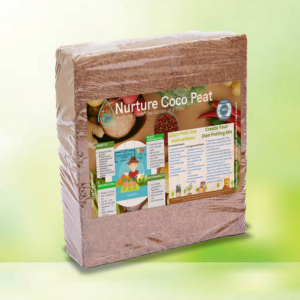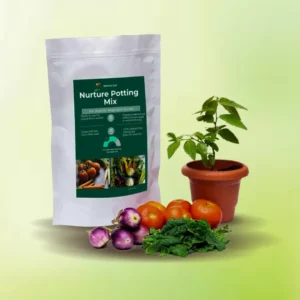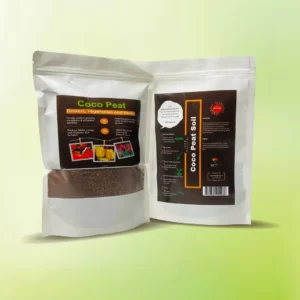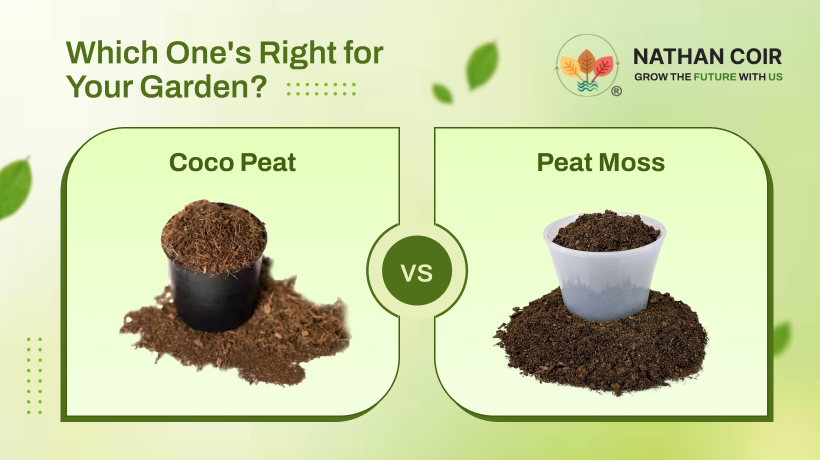Introduction:
Gardening is not merely a hobby; it’s a nurturing endeavor where every decision impacts the well-being of your plants. The choice of soil is a pivotal aspect of this process, and two contenders frequently vie for attention: peat moss and coco peat. This article serves as your comprehensive guide to understanding the differences, advantages, and disadvantages of coco peat soil and peat moss, aiding you in making an informed decision for your gardening needs.
Differentiating Cocopeat Soil vs. Peat Moss: 5 Key Factors
1.Coco peat Soil vs Peat Moss: Sources
Coco Peat:
Derived from the husks of coconuts, coco peat is a byproduct of the coconut industry. This makes it an environmentally sustainable choice, utilizing a waste product to create a valuable gardening medium.
Peat Moss:
In contrast, peat moss is harvested from decomposed sphagnum moss in bogs. This extraction process, however, raises concerns about the ecological impact on bog habitats and the slow regeneration of peat.
2. Coco peat Soil vs Peat Moss: Cost
Coco Peat:
Due to its abundance as a byproduct, coco peat often proves to be a more cost-effective option. This makes it an attractive choice for budget-conscious gardeners.
Peat Moss:
The extraction process and limited availability contribute to the higher cost of peat moss. Considering your budget is crucial when deciding between the two.
3. Coco peat Soil vs Peat Moss: pH level
Coco Peat:
Coco peat tends to have a more neutral pH level, providing a stable environment for a wide range of plants. This can be advantageous for gardeners aiming for versatile soil.
Peat Moss:
Peat moss, on the other hand, is naturally acidic. While this can be beneficial for acid-loving plants, it may require adjustments for those that prefer a more neutral or alkaline soil.
4. Coco Peat soil vs Peat Moss: Water
Coco Peat:
Known for its excellent water retention properties, coco peat ensures a consistent moisture level for plants. This can be advantageous in regions with irregular watering patterns.
Peat Moss:
Peat moss also retains water well, but it tends to be less airy than coco peat. This characteristic can impact aeration and root health in certain plant species.
5. Coco Peat vs Peat Moss: Sustainability
Coco Peat:
Coco peat stands out for its eco-friendly credentials. By repurposing a waste product, it contributes to sustainable gardening practices and reduces the environmental impact associated with coconut husk disposal.
Peat Moss:
The extraction of peat moss from bogs raises concerns about habitat destruction and the slow regeneration of peat. Opting for peat alternatives may align better with environmentally conscious gardening practices.
Advantages Coco Peat Soil vs Peat Moss
Now, let’s explore the unique advantages that both coco peat soil and peat moss bring to the table.
Advantages of Coco Peat Soil:
Sustainable: As mentioned earlier, coco peat is a byproduct of the coconut industry, making it an environmentally friendly choice.
Cost-Effective: The abundance of coconut husks makes coco peat a cost-effective option for gardeners on a budget.
Versatility: Coco peat’s neutral pH and texture make it suitable for a wide variety of plants, providing a versatile growing medium.
Water Retention: The ability to retain water well ensures a consistent moisture level, promoting healthier plant growth.
Aeration: Coco peat provides excellent aeration for plant roots, preventing waterlogging and promoting root development.
Advantages of Peat Moss:
Acidity: For plants that thrive in acidic conditions, peat moss’s naturally low pH can be beneficial.
Lightweight: Peat moss is relatively lightweight, making it easy to handle and work with in gardening projects.
Nutrient Absorption: Peat moss can absorb and retain nutrients effectively, providing a nutrient-rich environment for plant roots.
Disadvantages Coco Peat Soil vs Peat Moss
As with any gardening choice, it’s essential to consider the potential downsides. Let’s explore the disadvantages of both coco peat soil and peat moss.
Disadvantages of Coco Peat Soil:
Nutrient Content: Coco peat has a lower nutrient content compared to peat moss. While it provides a good growing medium, additional fertilization may be required.
pH Adjustment: The pH level of coco peat may need adjustment for certain plants that prefer more acidic or alkaline conditions.
Disadvantages of Peat Moss:
Environmental Impact: The extraction of peat moss from bogs raises environmental concerns due to habitat disturbance and carbon emissions.
Cost: Peat moss is often more expensive than coco peat, making it less accessible for gardeners with budget constraints.
Which should I choose, coco peat soil vs peat moss?
The decision between coco peat soil and peat moss ultimately depends on various factors, including your budget, the specific needs of your plants, and your commitment to sustainable gardening practices. Here are some considerations to guide your decision:
Type of Plants: Consider the pH preferences of the plants you intend to grow. If your plants thrive in acidic conditions, peat moss might be more suitable. For a broader range of plants, coco peat could be a versatile choice.
Budget Constraints: If cost is a significant factor, coco peat may be the more economical option. It provides a cost-effective solution without compromising on the quality of the growing medium.
Sustainability: If environmental impact is a top priority for you, coco peat stands out as the more sustainable choice. Its use of coconut husk byproducts aligns with eco-friendly gardening practices.
Eco-Friendly Gardening: Choosing Between Coco Peat Soil and Peat Moss
If sustainability is at the forefront of your gardening philosophy, delve into the eco-friendly aspects of both mediums. Consider how your choice contributes to waste reduction and overall environmental well-being.
Nutrient-Rich Foundations: Coco Peat Soil vs. Peat Moss for Your Plants
To create a thriving garden, it’s essential to understand how the nutrient content of coco peat soil and peat moss can impact the health and vitality of your plants. Explore the nutrient absorption capabilities of each medium to make an informed decision.
Water-wise Gardening: Exploring Coco Peat Soil and Peat Moss Options
regions where water conservation is crucial, explore the water-wise attributes of coco peat soil and peat moss. Assess how each medium handles water and choose accordingly to optimize the health of your garden.
Aeration Matters: Selecting the Best Medium for Your Home Garden
Aeration is a critical factor for healthy plant growth. Delve into the aeration properties of both coco peat and peat moss to select the best medium for providing optimal conditions for your plants’ roots.
Environmental Impact: Coco Peat Soil and Peat Moss Compared for Sustainable Gardening
Consider the broader environmental impact of your gardening choices. Explore the habitat preservation aspect, the carbon footprint, and the overall sustainability of your chosen medium for a greener gardening approach.
Conclusion
In conclusion, the choice between coco peat soil and peat moss involves careful consideration of various factors. Whether you prioritize cost, pH levels, sustainability, or the specific needs of your plants, this guide aims to equip you with the information needed to make an informed decision.
Remember, there is no one-size-fits-all solution. Each gardening medium has its strengths and weaknesses, and the best choice depends on your unique circumstances and preferences. By weighing the advantages and disadvantages, considering the environmental impact, and understanding the needs of your plants, you can cultivate a garden that not only flourishes but also aligns with your values as a mindful gardener.





